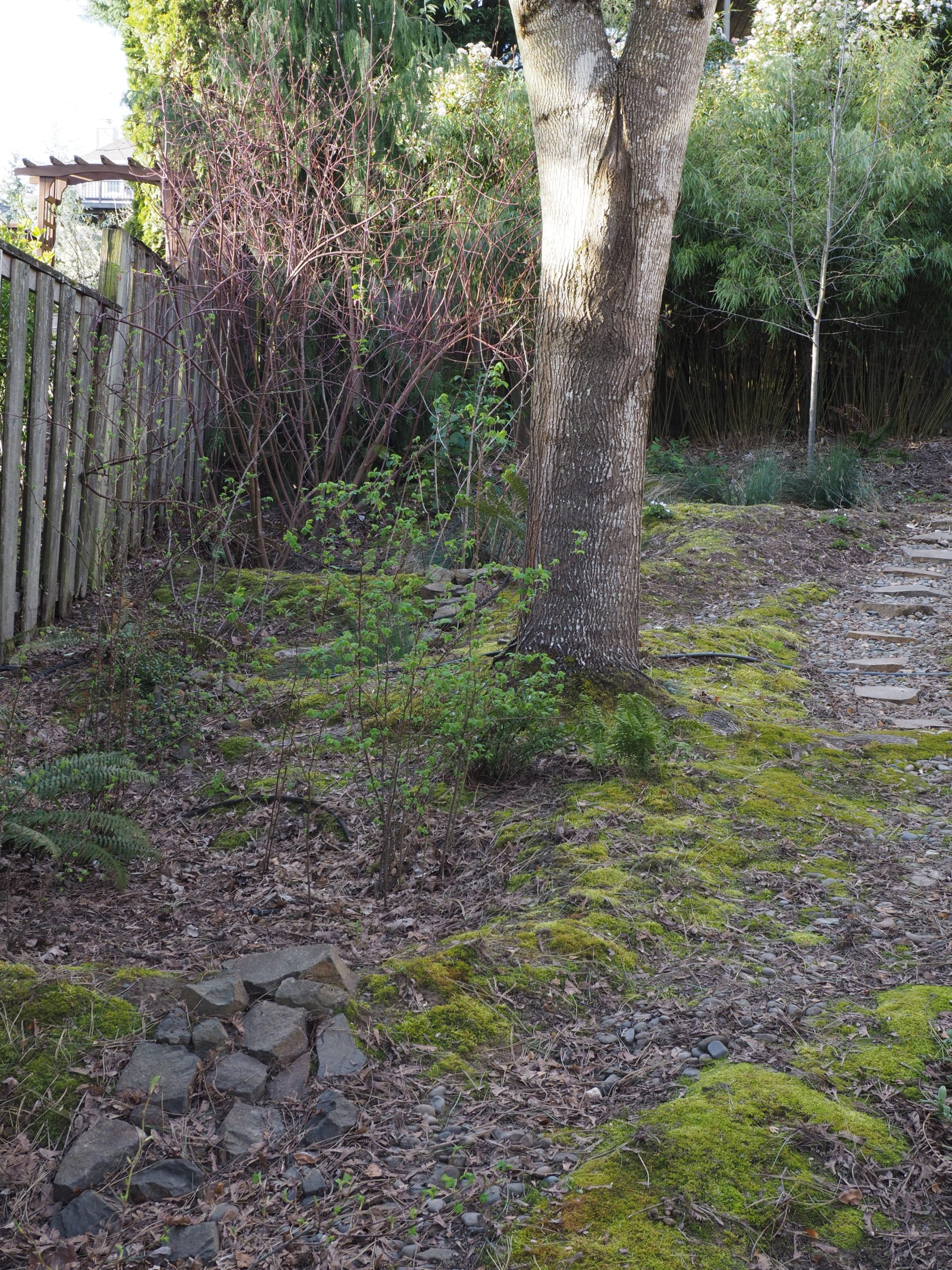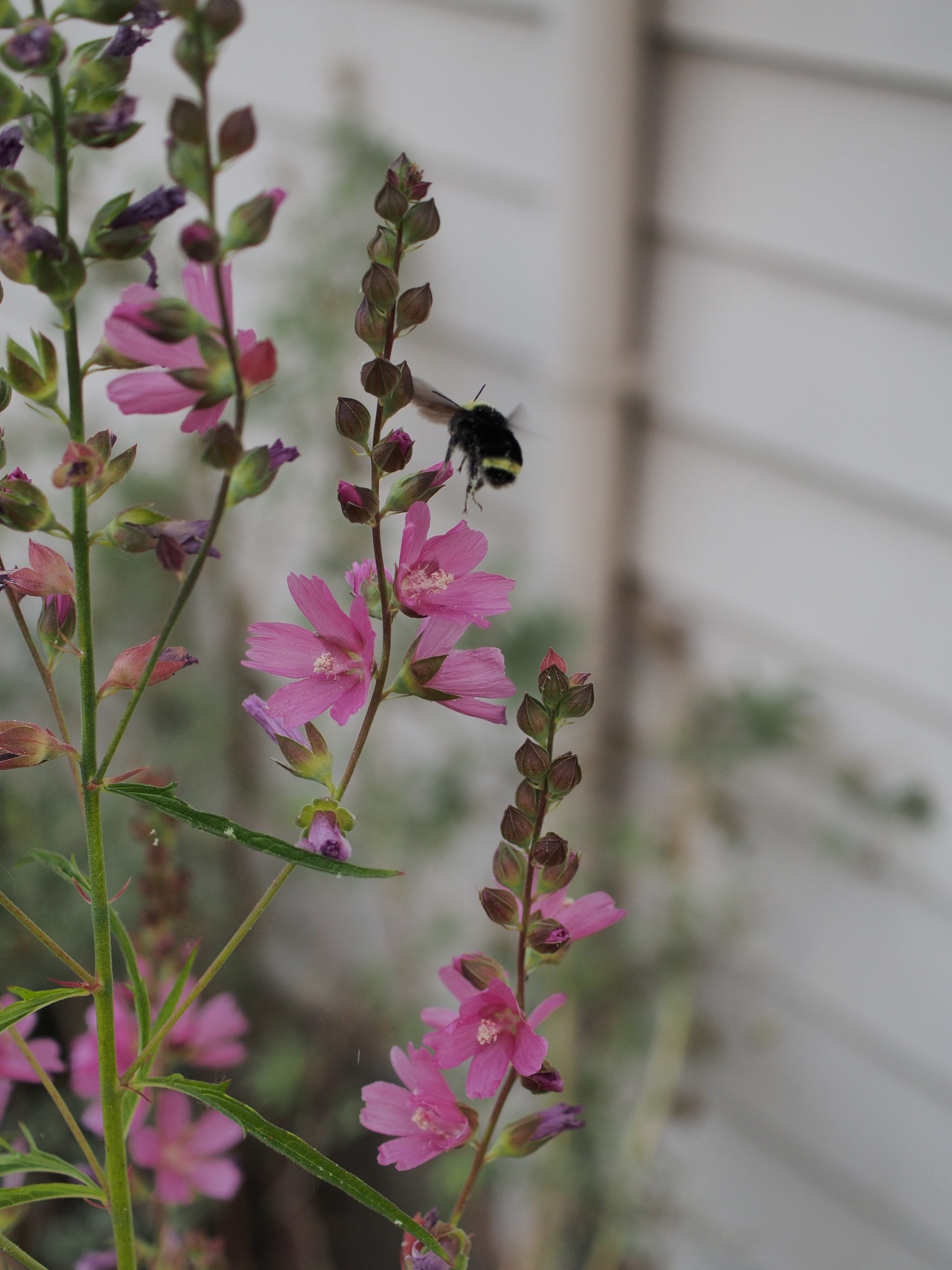Site Information: SW Portland habitat, with full sun, part sun, shade, dry, moist, wet, and slope areas, and miscellaneous mystery fills/matrices in lieu of soil.
What inspired you to enroll in the Backyard Habitat Certification Program?
Solidarity, validation, and information.

How would you describe your habitat?
Stormwater management issues were the instigating and maybe most obvious influence, but the response strategy was about environmental stewardship, under the constraint of costs at the outset and maintenance, and aspiring to DIY.

What are your top three favorite native plants and why do you love them?
Well, there are natives that I love considerably more than what I’ve succeeded or even tried to grow, so let me limit the context to my own yard: The ones that give me the most satisfaction and delight are western bleeding heart, Pacific ninebark, and Lewis’s mock orange.

What changes have you observed as a result of creating habitat?
Neighbor interest stands out as the most obvious, but maybe that’s just because it’s been so many years since the yard’s absolute “before” condition. I could say the changes seem to suit some birds (towhees and chickadees) and rabbits–and regularly three or four neighbors’ cats as a result. I have always had a lot of invasive fox squirrels, but recently think I saw my first native Douglas squirrel.
What were the two most significant challenges you encountered while creating habitat, and how did you address them?
There was a row of six closely planted Norway maples, the superficial roots of which prevented practically anything from growing beneath them and thwarted even attempts to dig, amend and plant unpredictably even far from the trunks. Also, there was an underground irrigation system tangled amidst them, for which I had no diagram or info whatsoever. I hired a crew to remove every other tree, stump and all, on the advice that the remaining trees would expand to fill the gaps created in the canopy. It was a lot of work removing roots, but it created a huge newly plant-able area of shade, as well as a corridor in which to manage the stormwater flow. Demolishing an auxiliary driveway and retaining walls, having walls rebuilt, and reusing the concrete for paths were the biggest challenges–physically and economically, as well as esthetically.

What resources did you find especially helpful?
- The Stormwater Stars program.
- Amy Whitworth of Plan-it Earth Designs.
- The Backyard Habitat Certification Program.
- Portland Nursery’s help desk.
- The free PDF pamphlet Native Plants for Willamette Valley Yards.
- SW Native Plant Swap.

What part of your backyard habitat are you most proud of?
I’m proud of what I’ve achieved around the big shore pine downhill from my driveway. It was a steeply graded lawn bordered by a topiary cannonball array of non-native boxwoods. I regraded, terraced, and created some paths to it by sheet mulching and depositing the three Norway maples’ chipped remains. Since then, I’ve successfully and gradually installed a growing list of native plants, including bleeding heart, oxalis, Douglas Spirea, snowberry, salal, inside-out flower, fairy lantern, miner’s lettuce, lupine, mock orange, and (fingers crossed) salmonberry.
